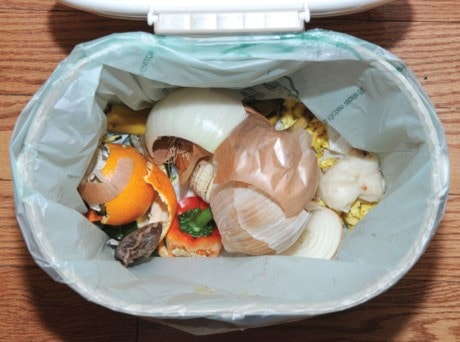When the City of Victoria launches kitchen scrap collection in January 2013, the plan is to truck it to a processing facility in Cobble Hill.
It involves a 48-kilometre commute over the Malahat. The distance was the main reason city staff “strongly recommended” against introducing the new service.
The landscape of local opportunities, however, is changing.
Three facilities within the capital region are in varying stages of readiness.
Each offers different advantages, including shorter trucking distances, valuable byproducts and cheaper processing prices.
First, a proposal on a site in Sooke, called South Island Organics, would knock approximately 10 kilometres off the commute.
Once it secures a feedstock agreement from a sizeable municipality such as Victoria or Saanich, it could open within six months, said Paul Hooper, South Island Organics’ general manager.
“Tipping fees could be potentially 30 to 40 per cent less (than the city’s current estimates),” said Hooper.
Second, Ian Vantreight of Vantreight Farms proposes a facility on the Peninsula, offering a significantly closer option.
He’s pitched an anaerobic digester, which captures greenhouse gas emissions and transforms them into fuel and fertilizer.
These added features, however, require a 12-month start-up time and higher capital costs.
Third, Stanhope Farm, also based in Central Saanich, is already operating. It launched a compost facility known as Foundation Organics earlier this year. So far, they cater to commercial clientele, but the facility could ramp up operations to process municipal waste.
All three facilities hope to win the city’s bid, and the stakes are high.
While Victoria has taken the lead on kitchen scrap collection, many municipalities in the region are likely to follow suit in advance of a ban on organic material at the Hartland Landfill. In total, the Capital Regional District estimated the region produces 14,000 tonnes of kitchen waste annually, for a total contract worth between $3.3 million and $4.3 million per year.
Victoria, however, is not considering any of the local processing options at this time.
“We’ve made arrangements with the CRD for them to look after our kitchen scraps,” said Terry Snow, in charge of civic services with the city.
“These new facilities are just getting established. Until they are established, we probably won’t be moving outside of the CRD. But it’s a year out, so who knows?”
Signing on with the CRD involves hauling kitchen scraps to the Hartland Landfill, and paying a $107-per-tonne fee to have the organic waste transported to Fisher Road Recycling in Cobble Hill for processing.
That’s how View Royal and Oak Bay have conducted their kitchen scrap collection pilot projects, and it’s an option the CRD has extended to all municipalities in the region.
Come June, however, the CRD’s contract with Fisher Road facility will expire. It opens up the option to choose a local processing plant.
“If the board decides that the CRD shall continue to play a role in the processing of kitchen scraps, we would issue a tender for the works as per CRD policy,” said Anke Bergner, a planner in the CRD’s environmental sustainability department.
“We expect to get direction on this from our board by the spring.”
Hooper is eager to start the conversation.
South Island Organics was among the facilities which applied to process organics for the CRD, before the regional board cancelled the initiative in December 2010.
“I want to continue to work with the CRD to get a solution,” said Hooper. It’s in all the taxpayers’ interest to have just one regional processing facility, he said.
